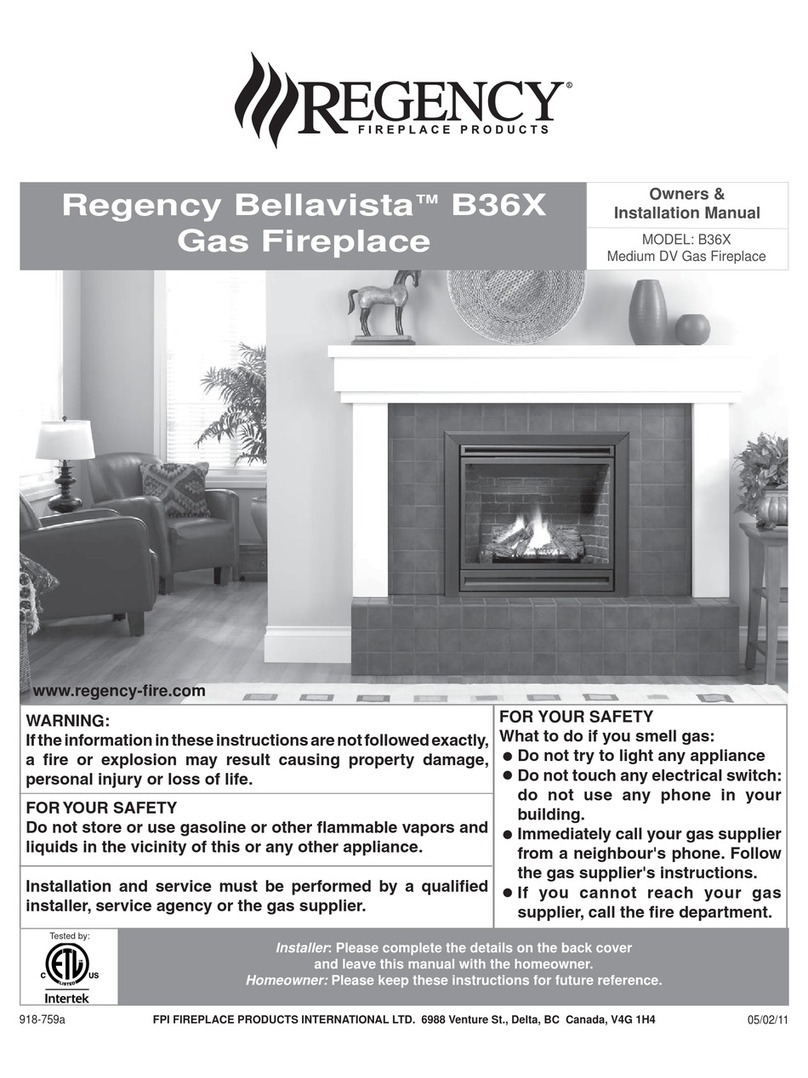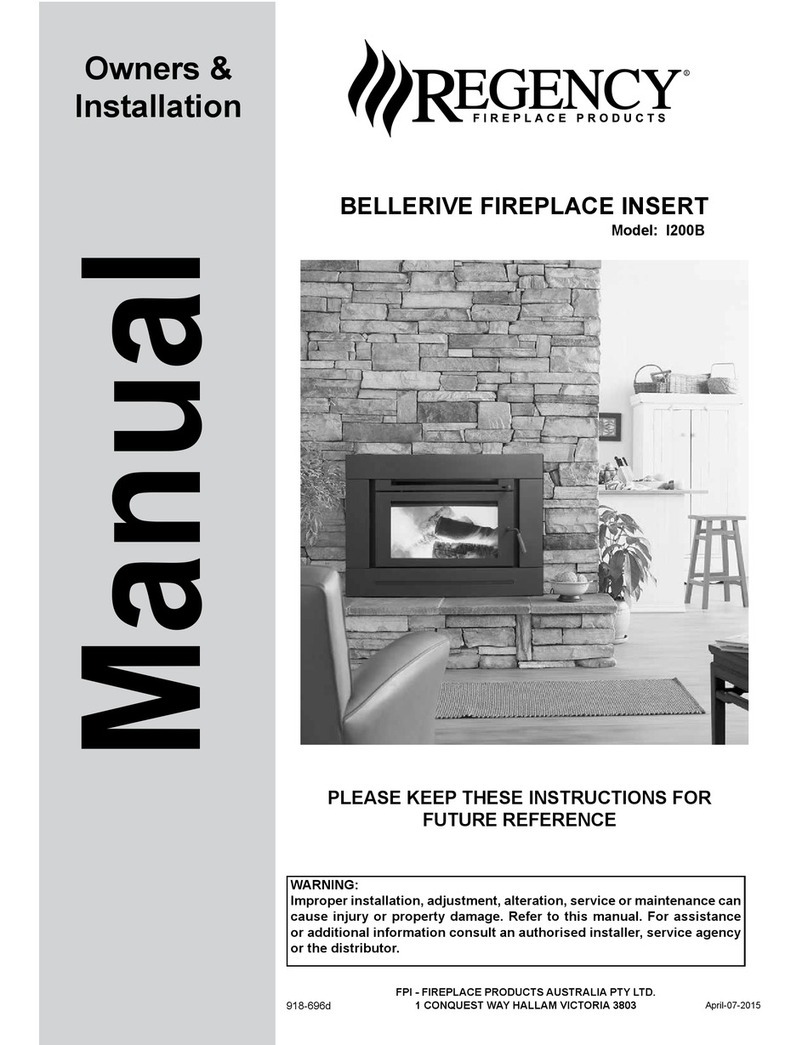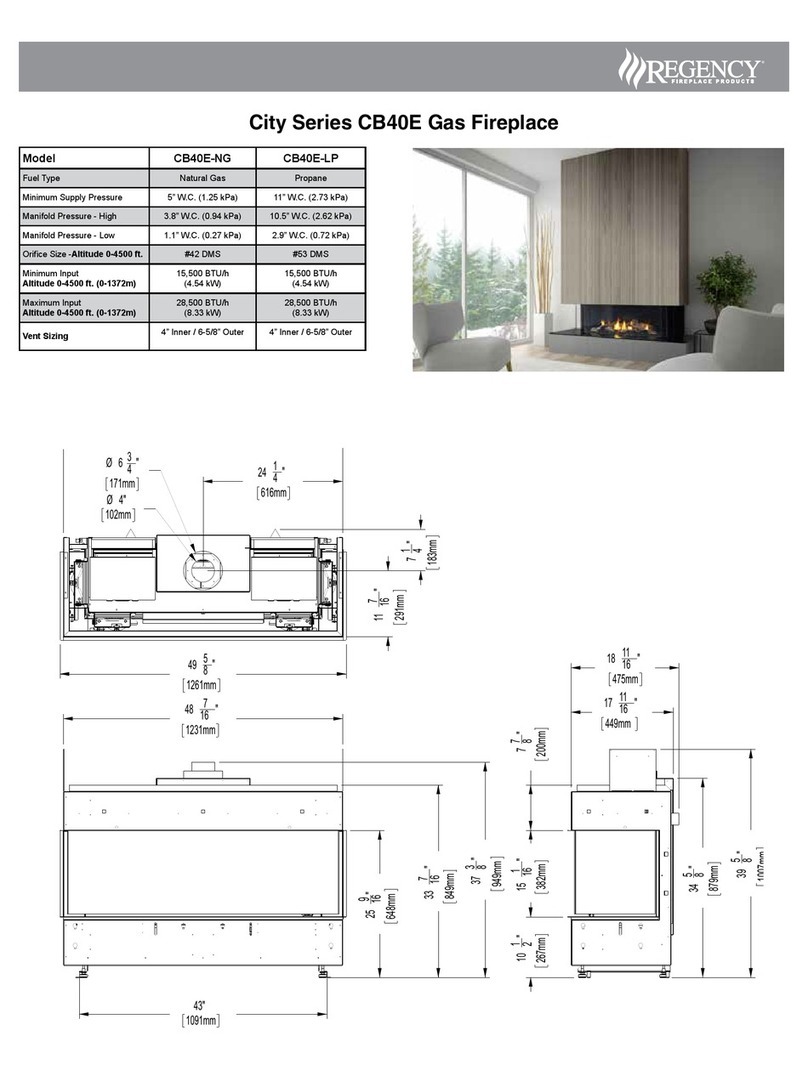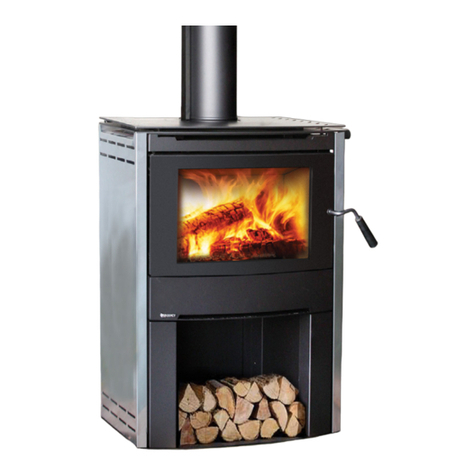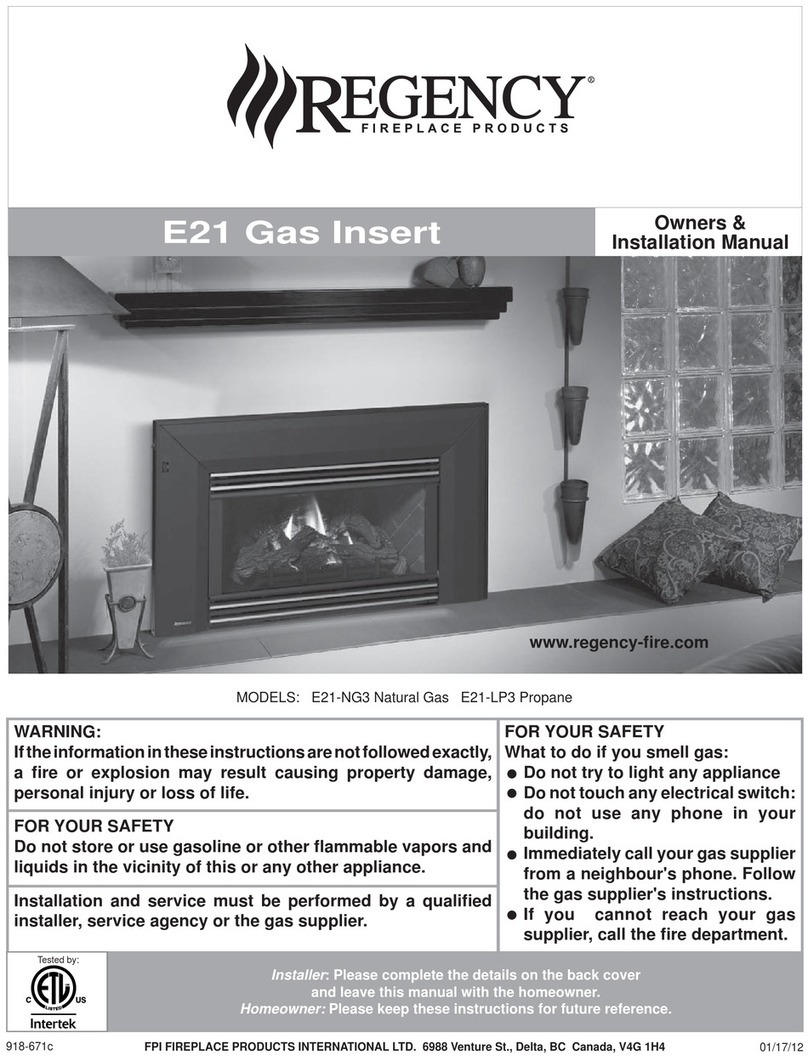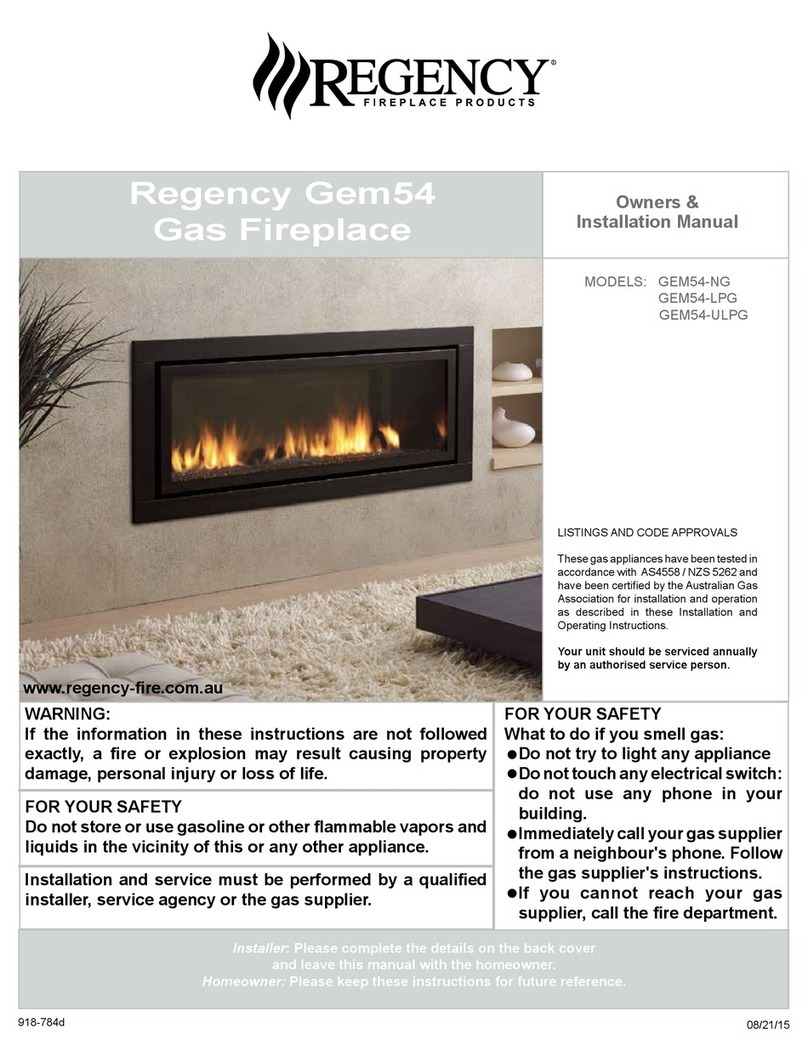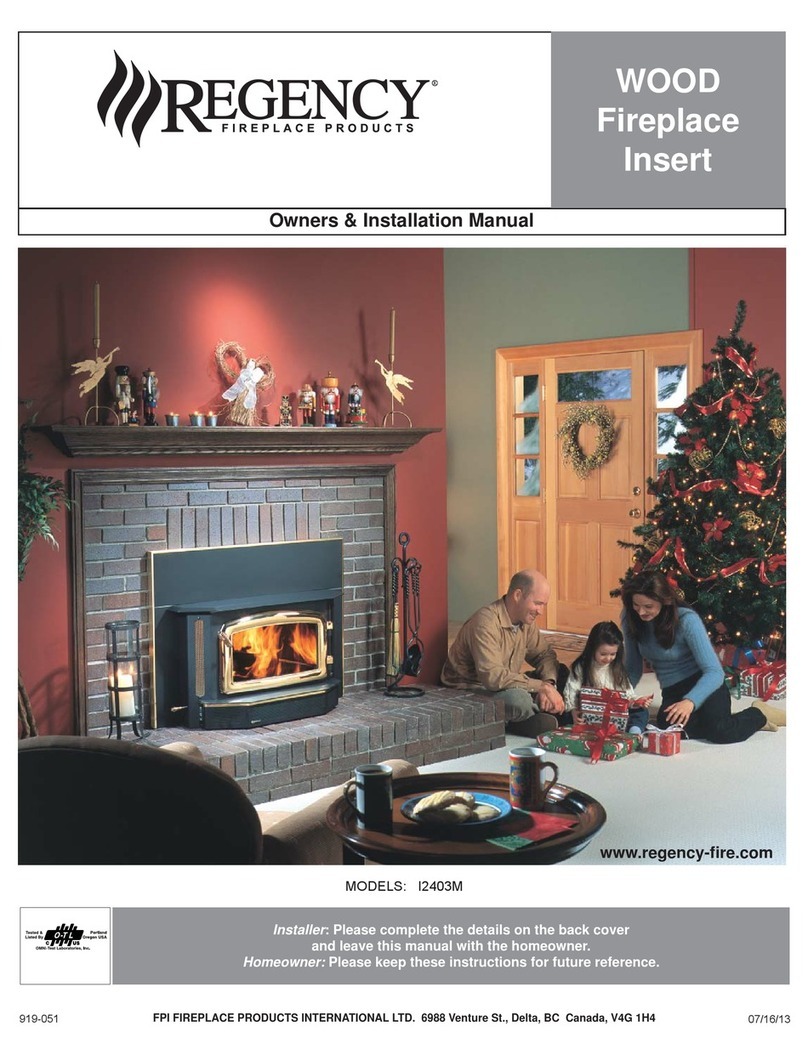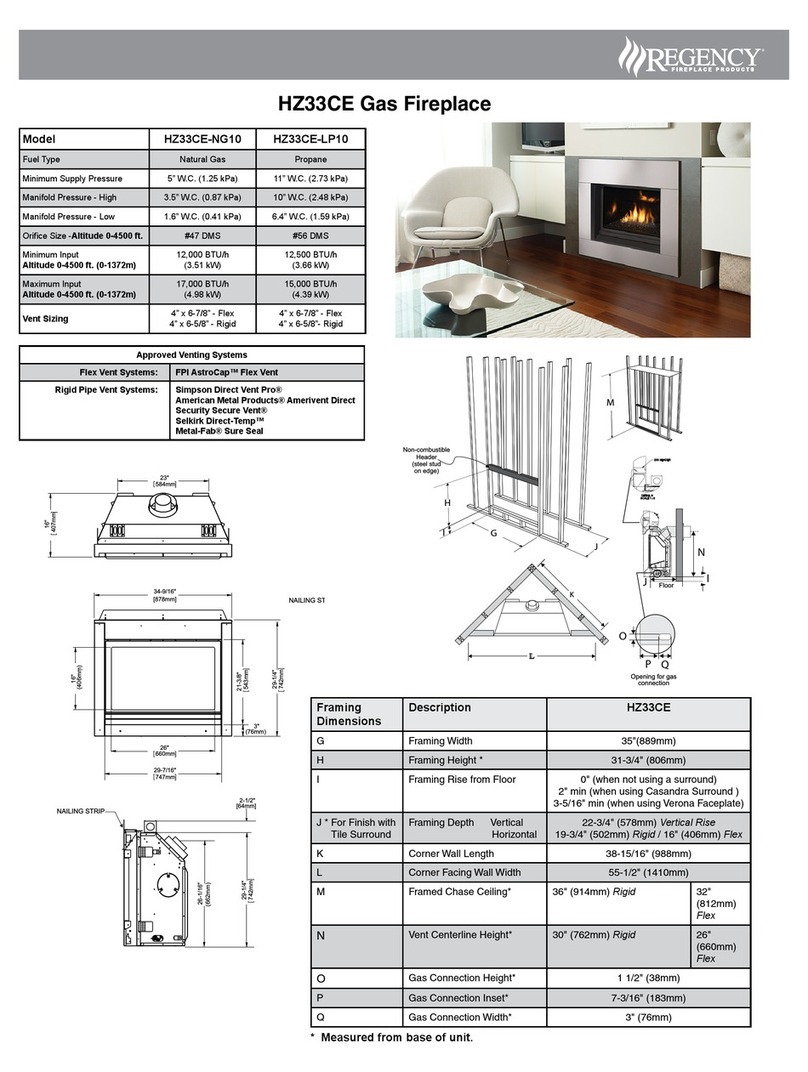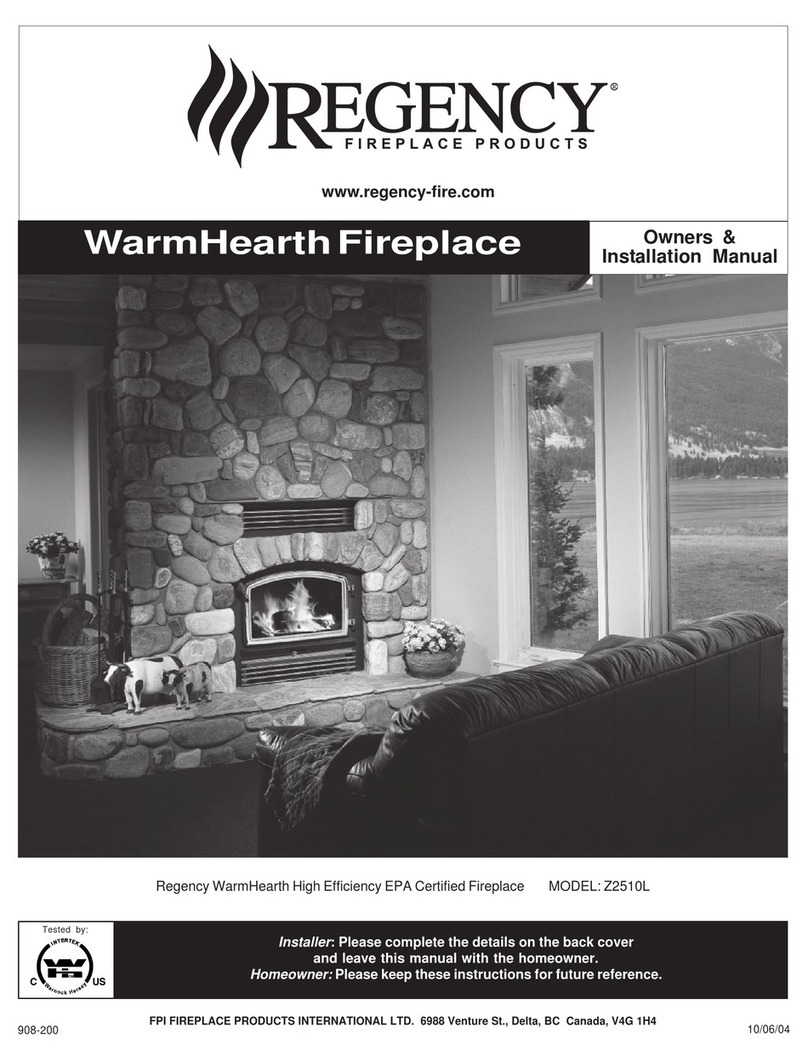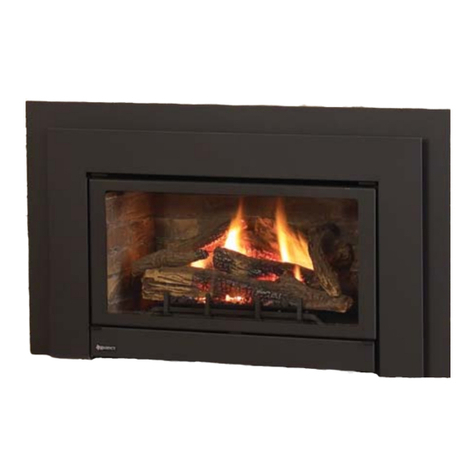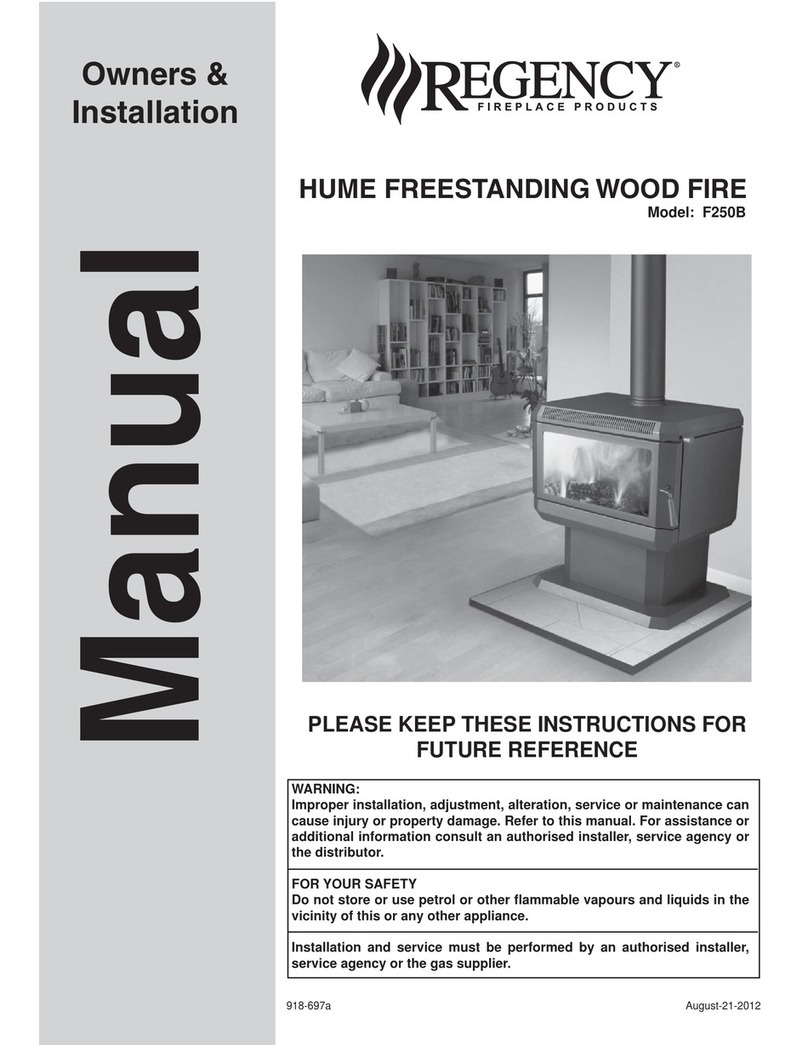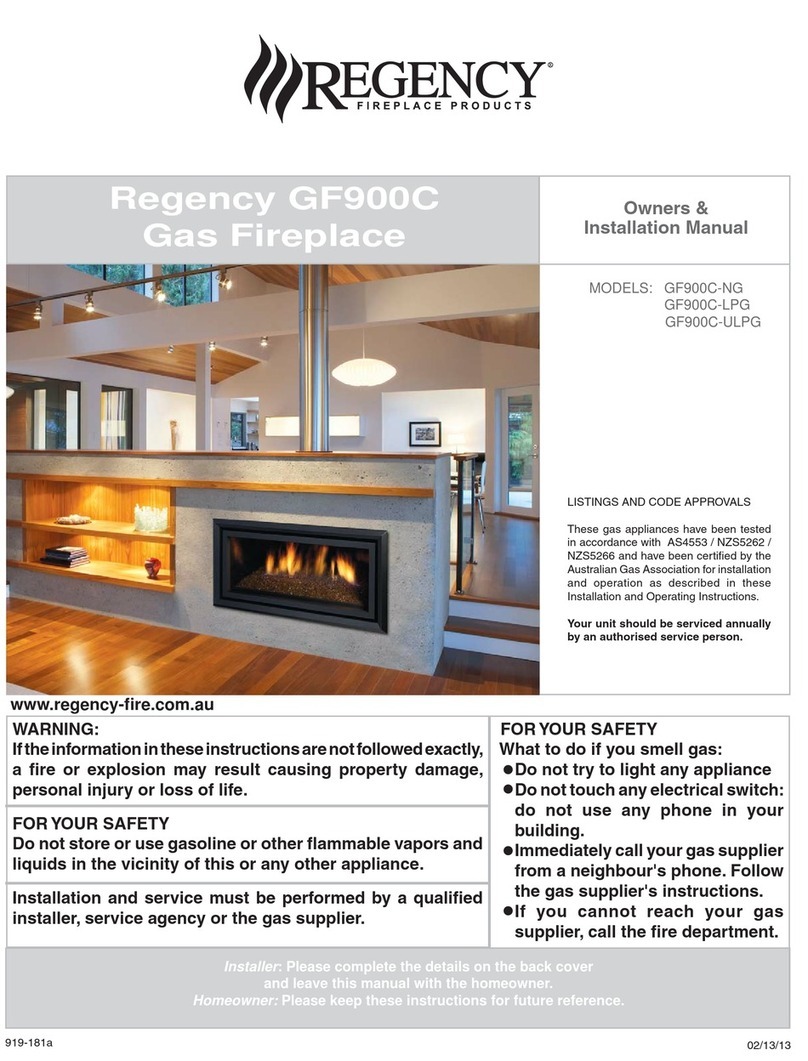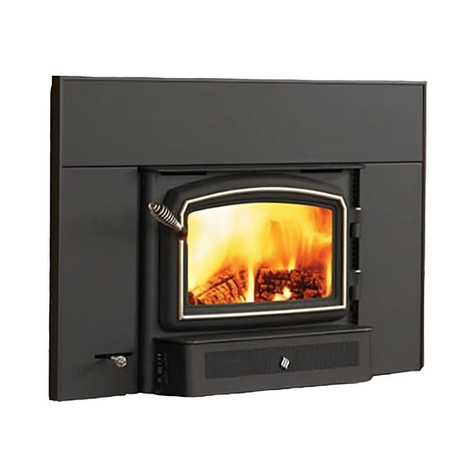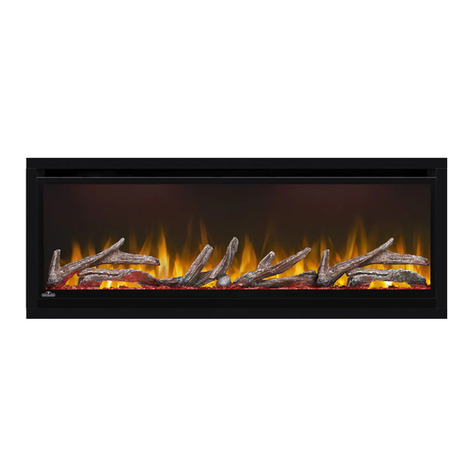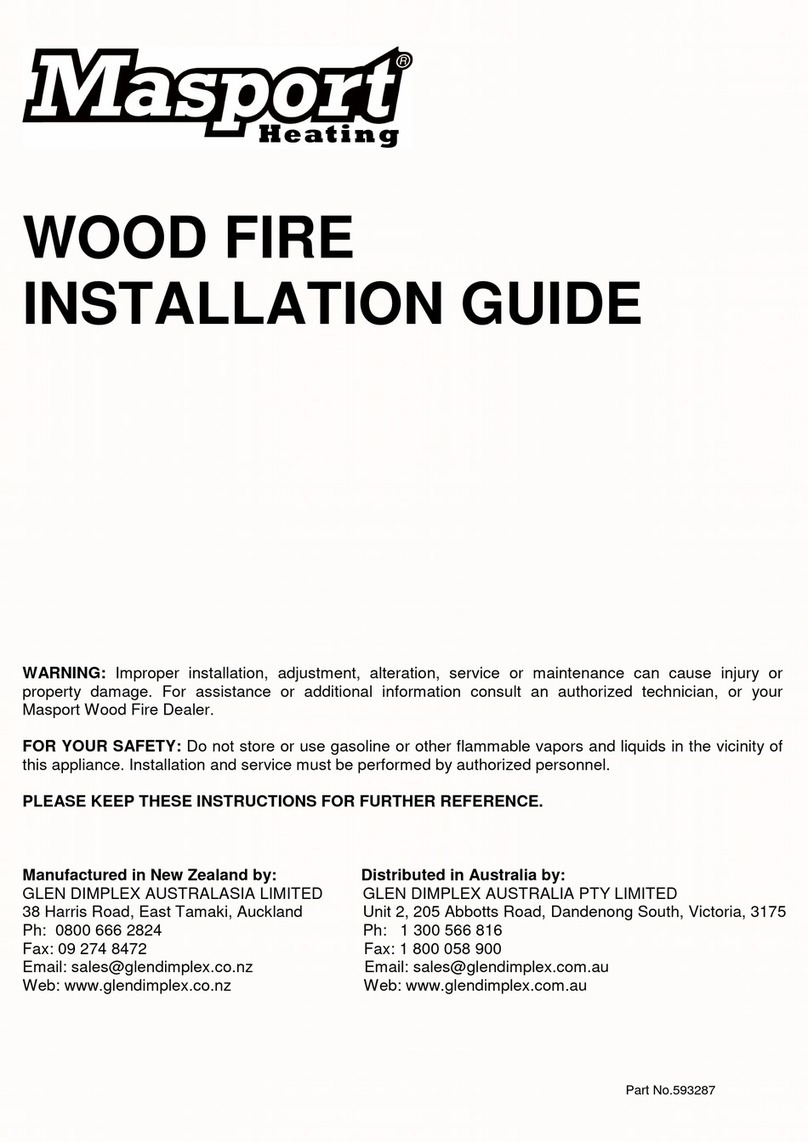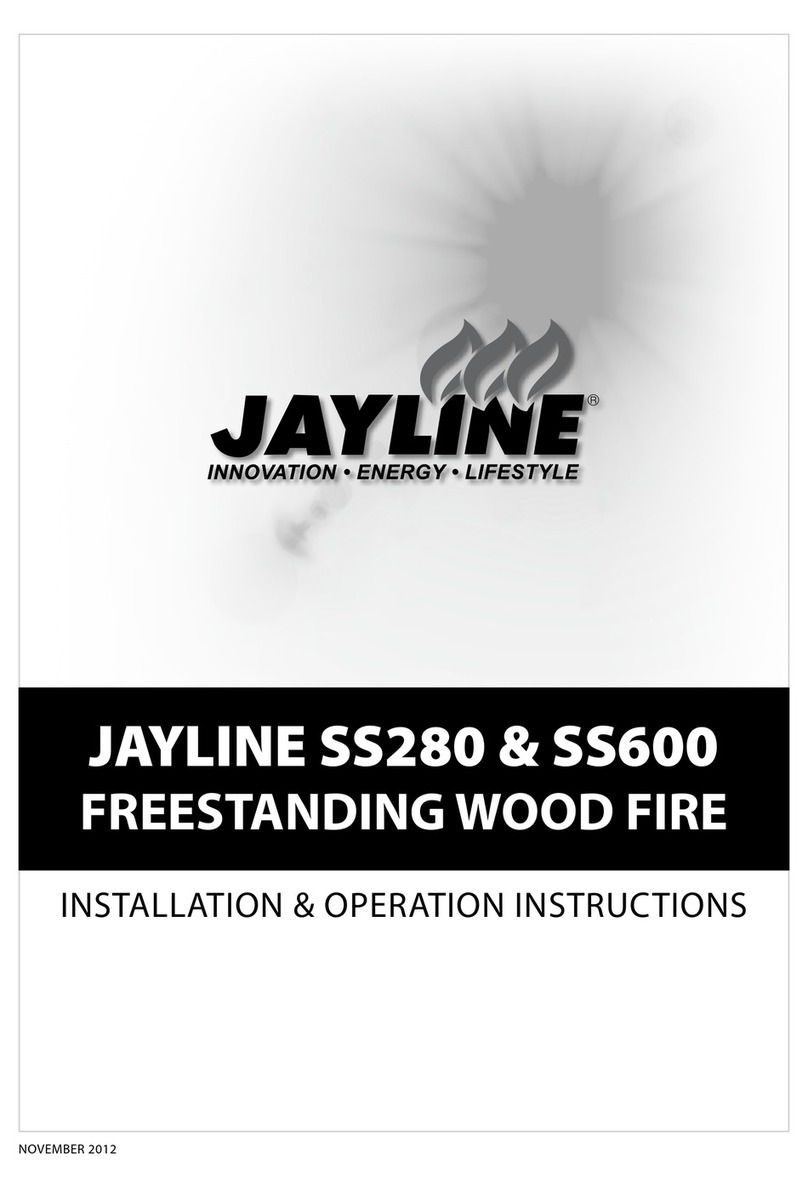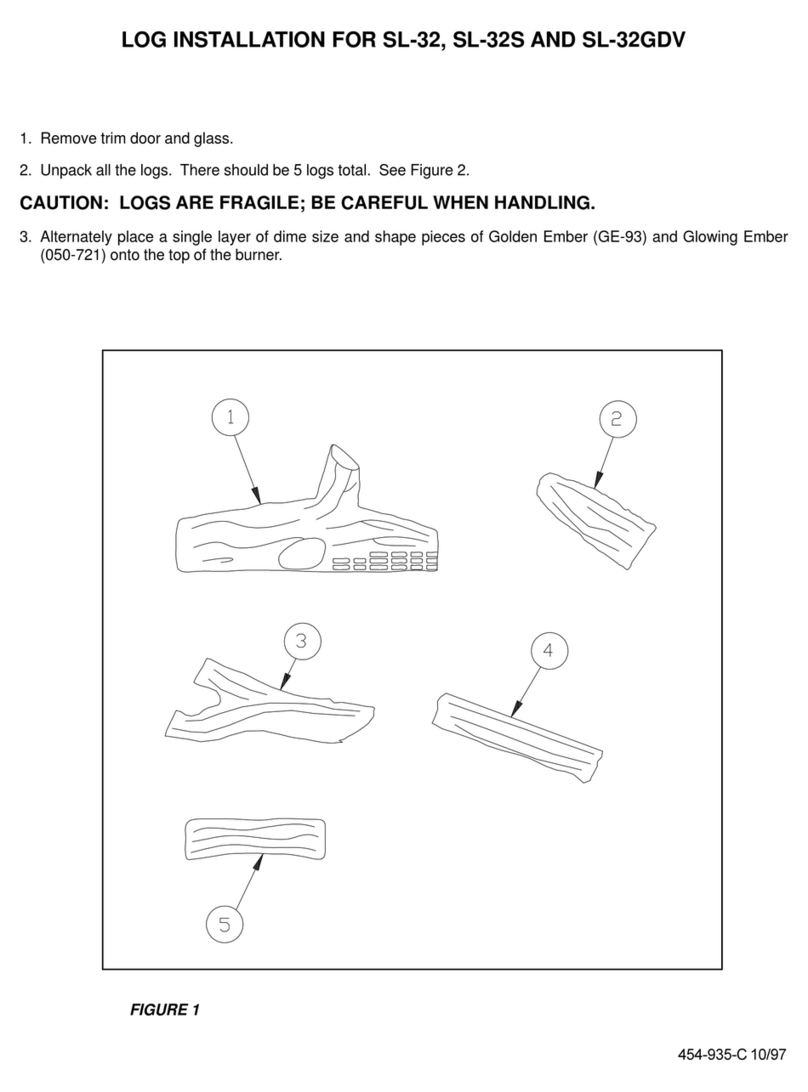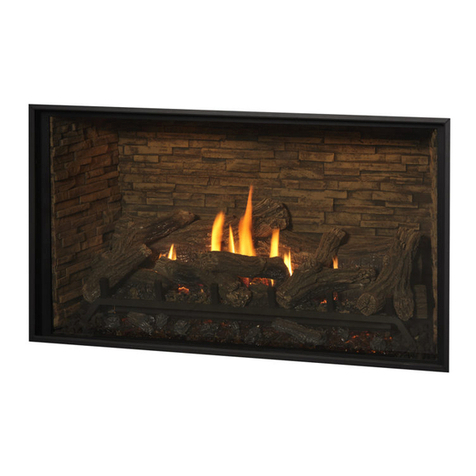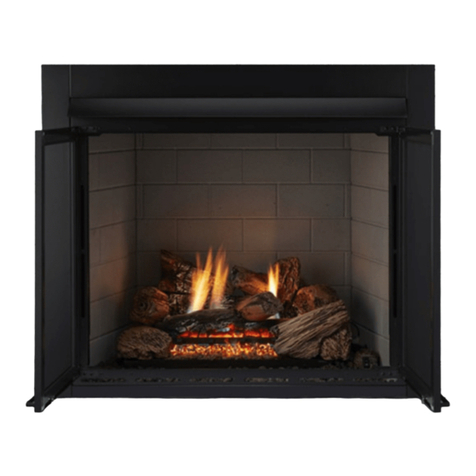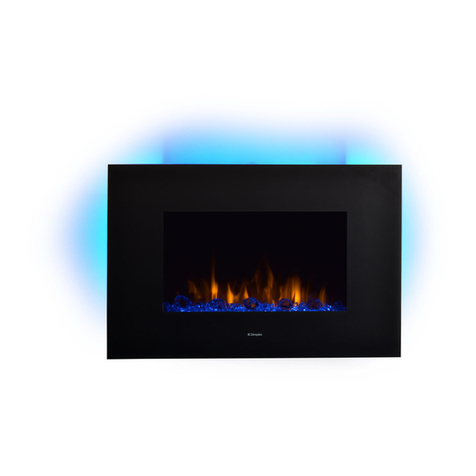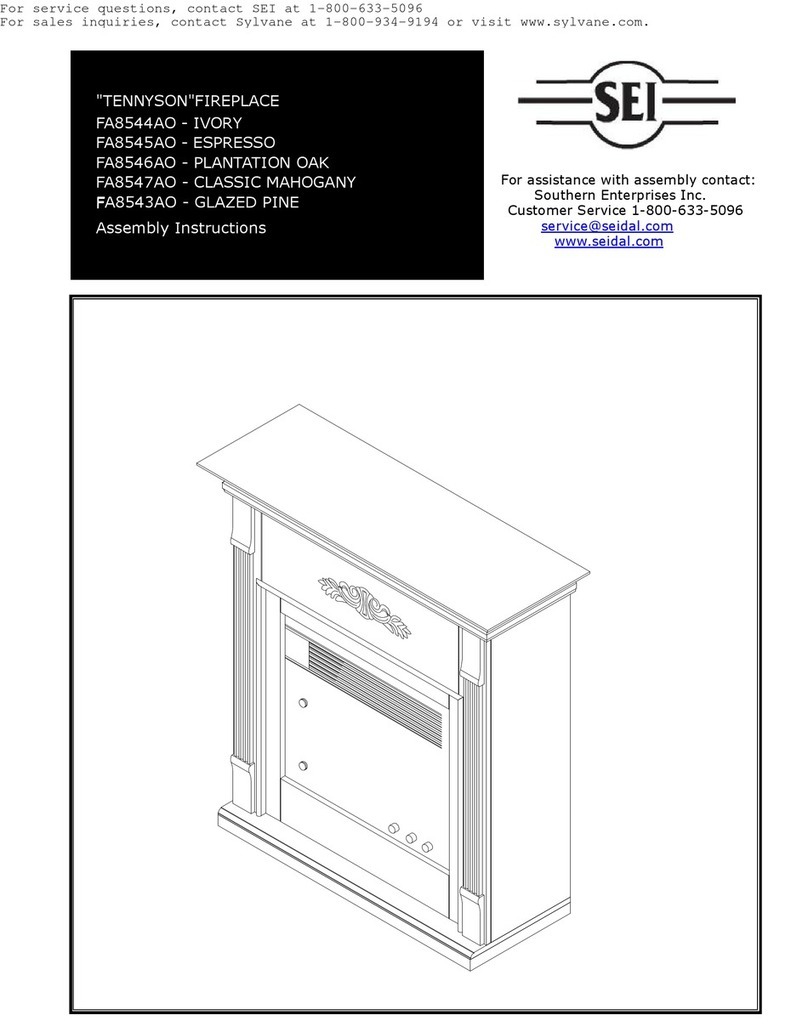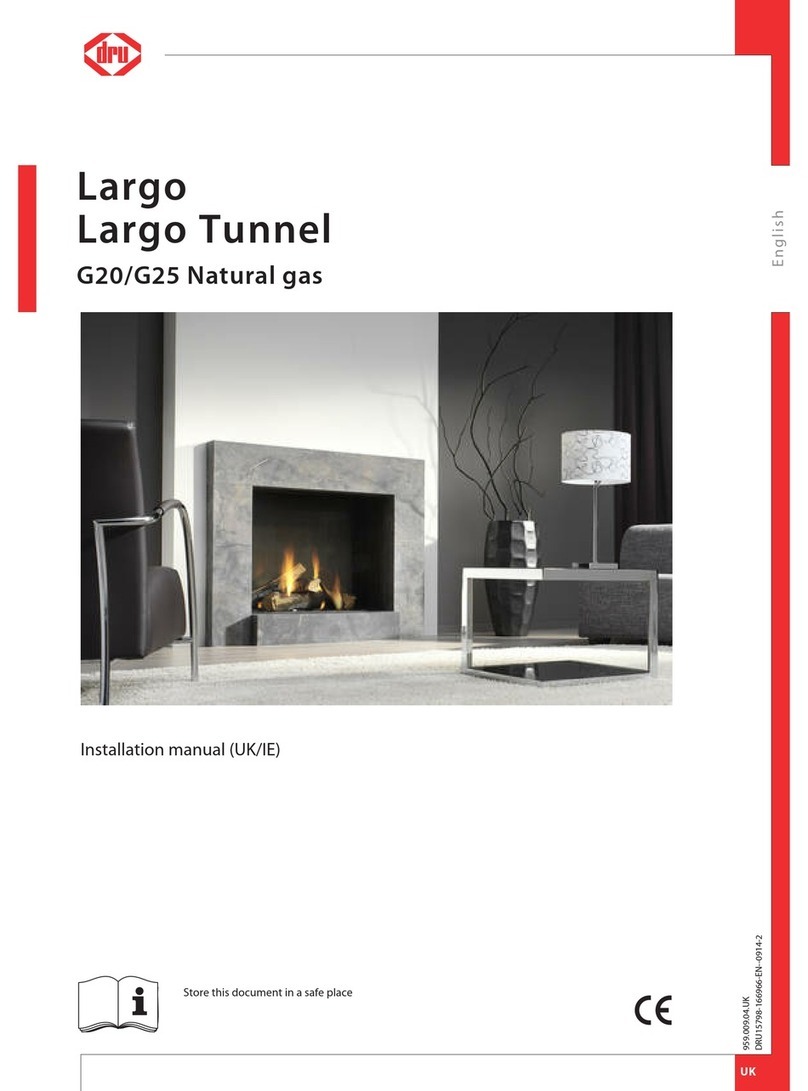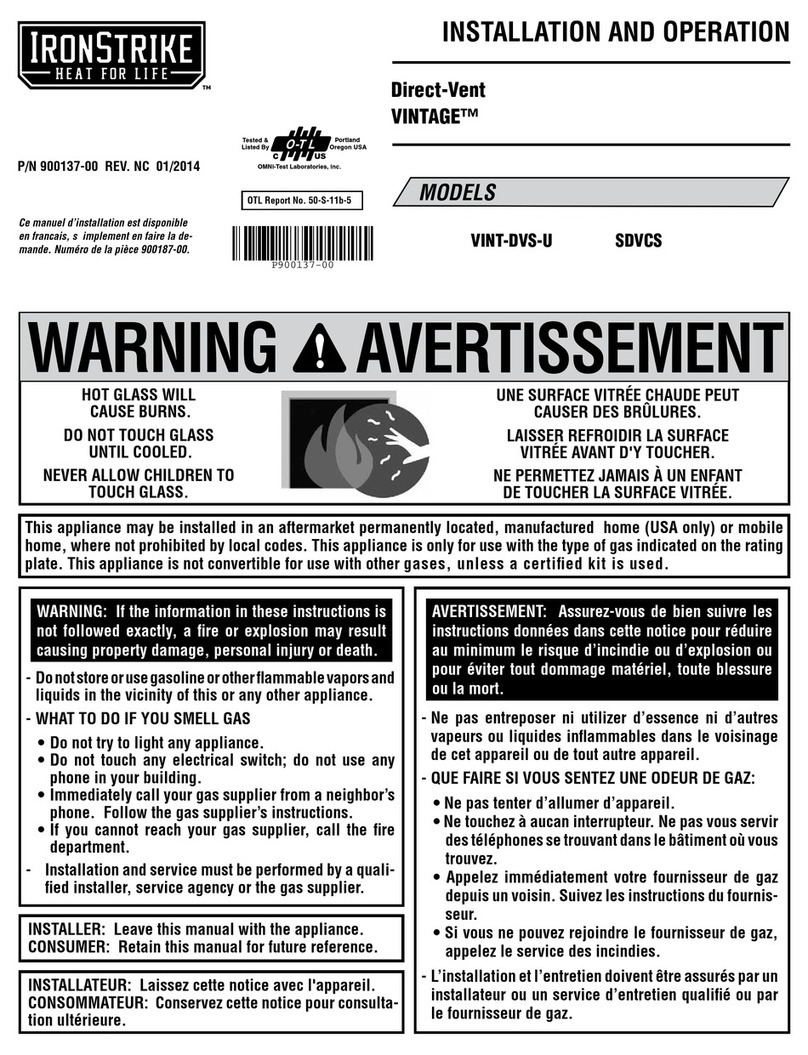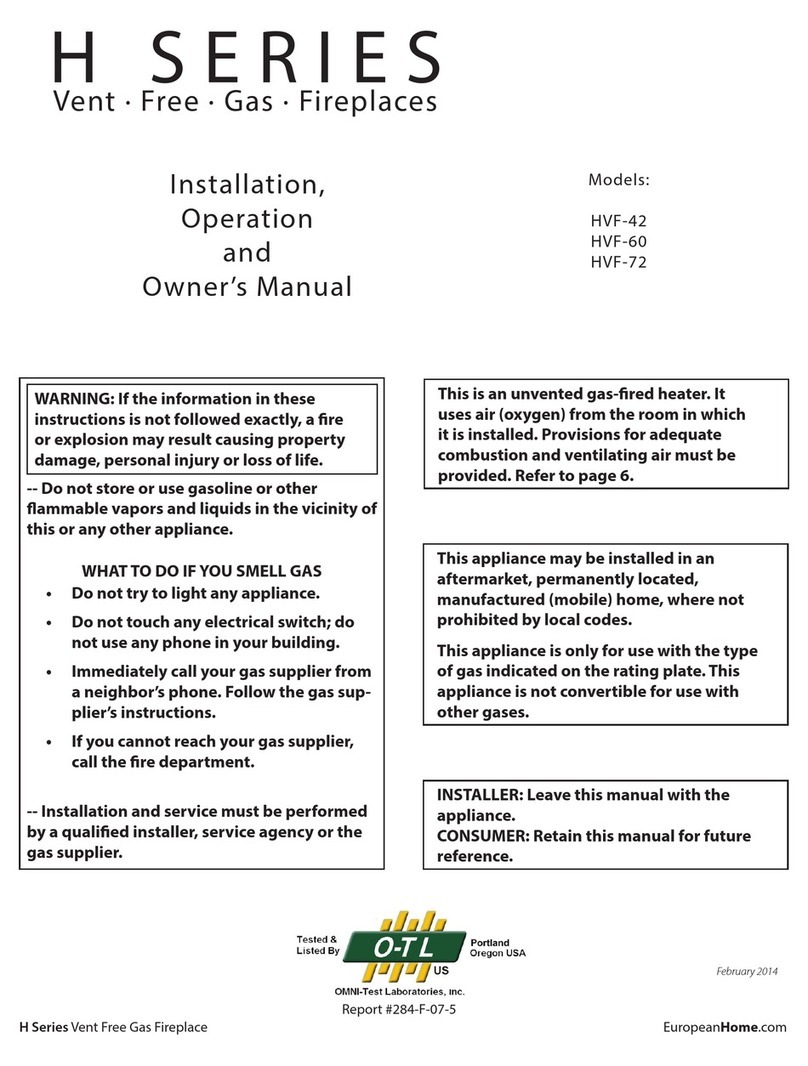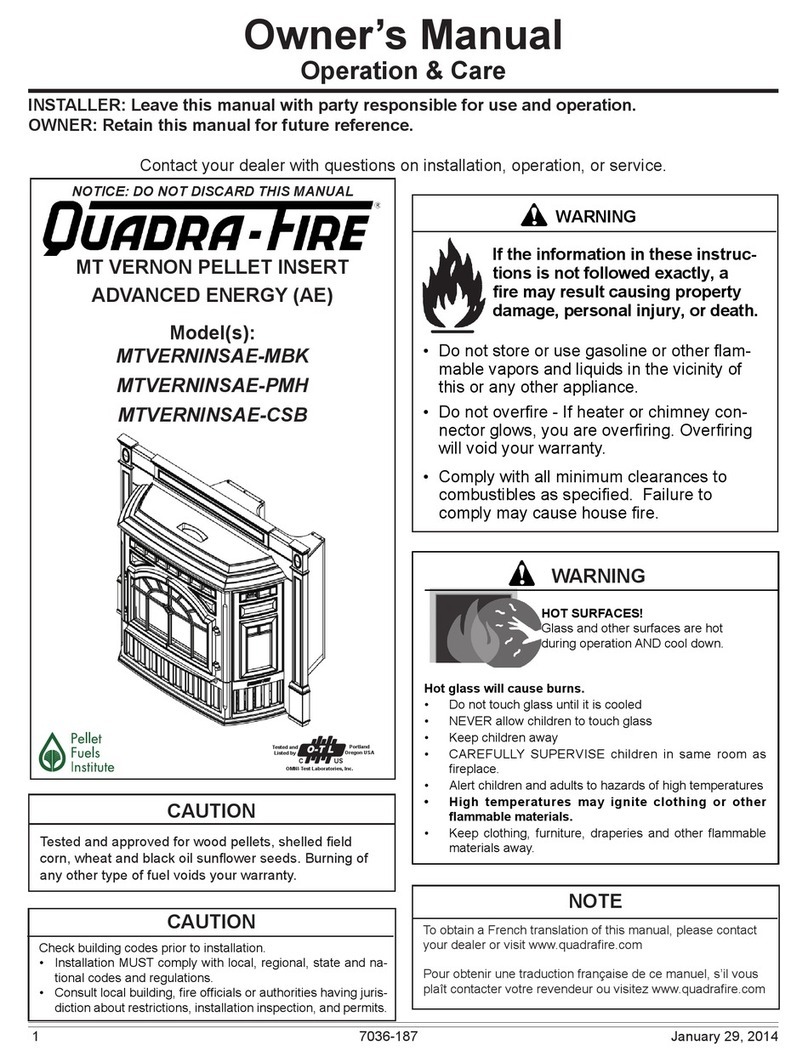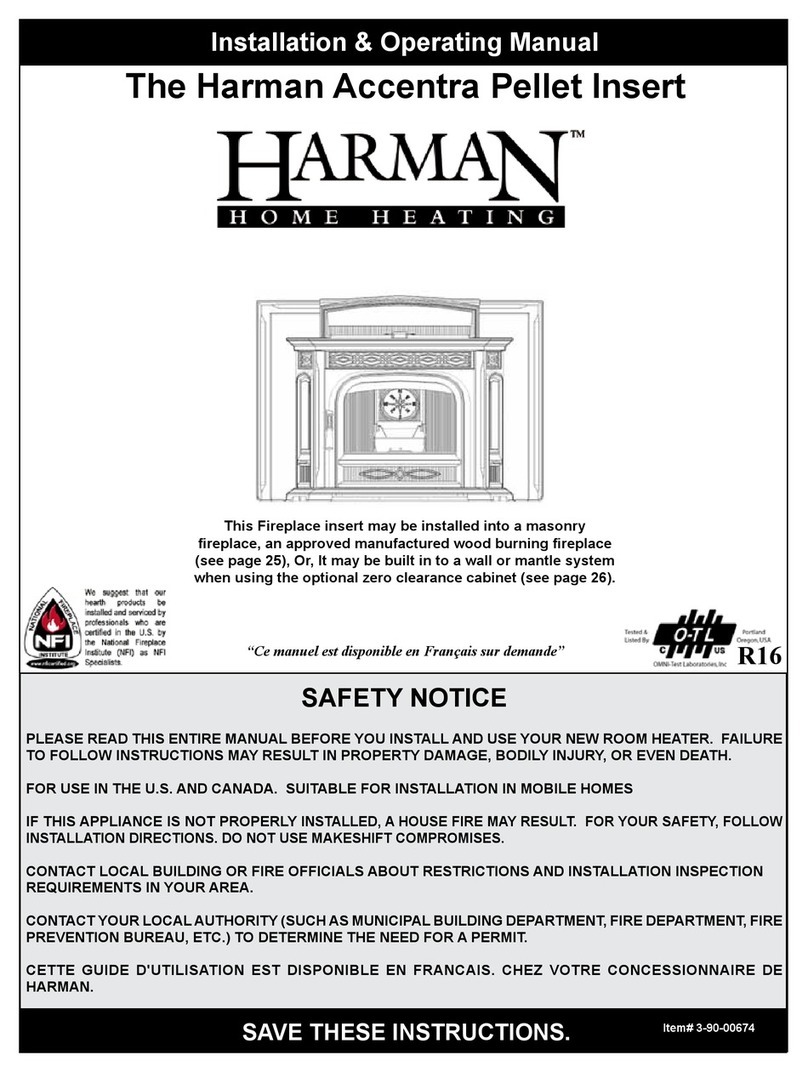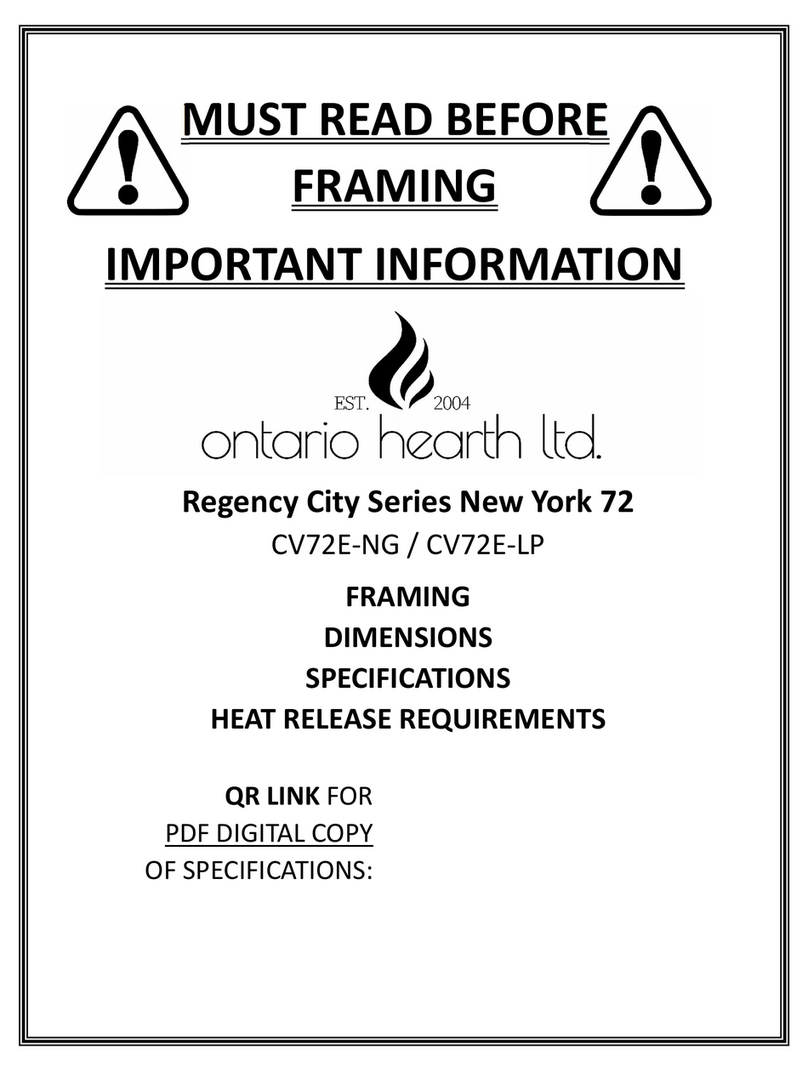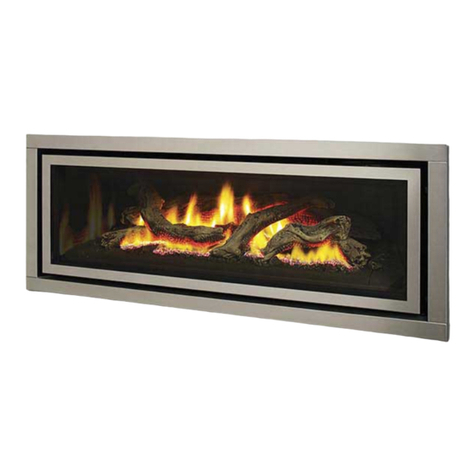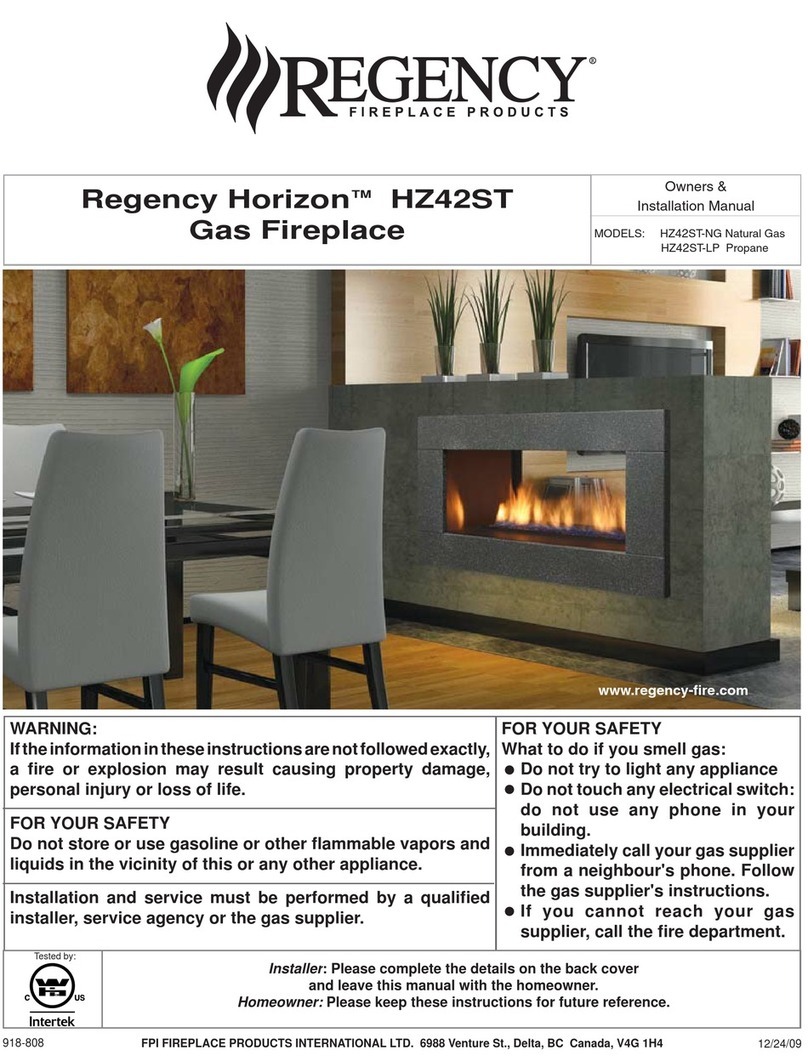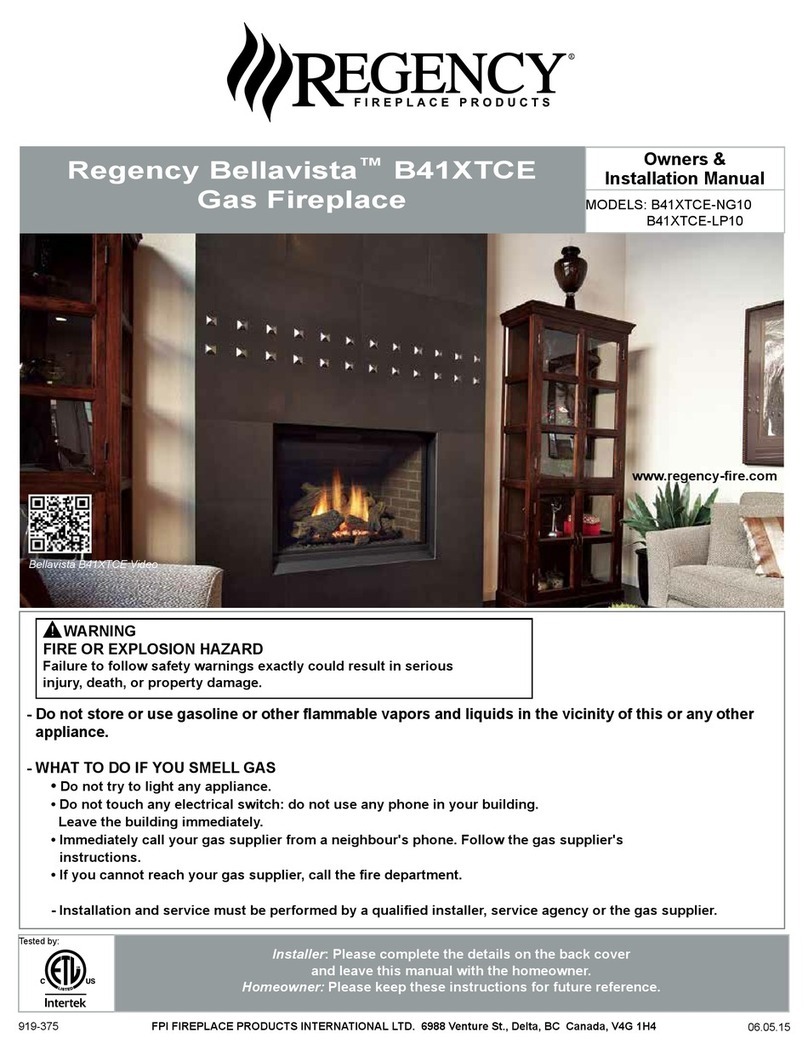
F2400/S2400 Freestanding Woodfire 7
installation
RESIDENTIAL
INSTALLATION
1) Please read this entire manual before you
install and use your new wood heater. Failure
to follow instructions may result in property
damage, bodily injury or even death. Be
aware that local Codes and Regulations may
override some items in this manual. Check
with your local inspector.
2) Select a position for your Regency Heater.
Consult the minimum clearance chart for
your model and set the heater in place. For
close clearance installation use listed double
wall connector systems.
3) To ensure vertical alignment, suspend a
plumb bob from the ceiling over the exact
center of your heater ue and mark a spot
on the ceiling to indicate the center of the
ue.
4) Check that the area above the ceiling is
clear for cutting. Re-conrm the clearance
from the heater to combustibles to ensure
that they are within the prescribed limits.
5) This wood heater must be connected to a
UL 103 HT (ULC S629) listed ue or a code
approved masonry ue with a ue liner.
6) Install ue according to ue manufacturers
instructions. The performance of your wood
heater is governed to a very large part by
the ue system. Too short a ue can cause
dicult start-up, dirty glass, backsmoking
when door is open, and even reduced heat
output. Too tall a ue may prompt excessive
draft which can result in very short burn
times and excessive heat output. The use
of an inexpensive ue pipe damper may be
helpful in reducing excessive draft.
CAUTION: The ue should be the same
size as the 6" ue outlet on the heater. The
ue must be listed as suitable for use with
solid fuels. For other types of ues check
with your local building code ocials. Do
not confuse a ue with a type “B” Venting
System used for gas appliances as suitable
for a wood burning appliance. For Mobile
Home installations refer to that section on
page 14.
7) Mark the location of the pedestal base or
legs on the oor, then move the heater aside
and mark the position of the oor protector.
8) The oor protector must be of non-combus-
tible material and must extend 16" in front
of the door opening and 6" to the sides and
rear of the unit. Some areas may require
a larger size oor protector. See your local
inspector. For outside air installation refer
to Mobile Home installation instructions on
page 14.
9) When the oor protection is complete, posi-
tion the heater with the ue collar centered
under the installed ue.
10) In seismically active areas, Regency rec-
ommends that your unit is secured to the
oor by using the bolt down holes inside
10) In seismically active areas, Regency rec-
ommends that your unit is secured to the
oor by using the bolt down holes inside
the pedestal (the same ones used in Mobile
Home installations).
11) For residential installations using 6" (152mm)
"C" Vent (single wall) the ue connector
must be at least 24 gauge steel. Do not use
galvanized pipe. For Mobile Home installa-
tion refer to the Mobile Home installation
instructions on page 14.
12) Do not connect this unit to a ue serving
another appliance.
13) A ue connector cannot pass through an attic
or roof space, closet or similar concealed
space, or a oor, ceiling, wall or partition
of combustible construction. In Canada,
if passage through a wall, or partition of
combustible construction is desired, the
installation shall conform to CAN/CSA-B365,
Installation Code for Solid-Fuel-Burning Ap-
pliances and Equipment.
14) Your Regency Wood heater is not to be
connected to any air distribution duct.
Emissions from burning wood or gas
could contain chemicals known to the
State of California to cause cancer, birth
defects or other reproductive harm.
NOTE: In Canada, oor protection must
extend 18" (450mm) to the front
and 8" (200mm) to each side and
back of the heater.
MODULAR INSTALLATION OPTIONS
WARNING: ONLY USE SPECIFIED COMPONENTS.
The following items are required when assembling your Regency Stove. F2402 unit - the Rear Heat Deector is supplied with the stove, but if you choose
not to use it you must use the Airmate instead.
Modular Part Clearances are dierent. Generally you can get closer clearances with the airmate than with the rear heat deector.
Airmate OR
Rear Heat Deflector
Convection heat with Airmate vs. Radiant Heat with Rear Heat Deector. The Airmate pushes heat forward out into
the room, the Rear Heat Deector deects the heat upward. Refer to the Installation sections within this manual.
Pedestal or Legs There are no performance dierences with either the pedestal or legs. It is primarily a personal preference. Legs can
be either painted steel or painted cast.
Leg installation requires the bottom shield.
OPTIONS: These can be installed at time of installation or added later:
Blower/Fan Adding the blower will increase the area heated by the stove, it can move warm air beyond the room where the
stove is located.
Ash Drawer Kit Adding the Ash Drawer Kit makes cleaning ashes out of the stove easier and cleaner (refer to Bottom Shield Ash
Drawer Kit, Installation section).
Screen Door A simple add-on option that will allow you to enjoy the sound, warmth and view of an open re.



